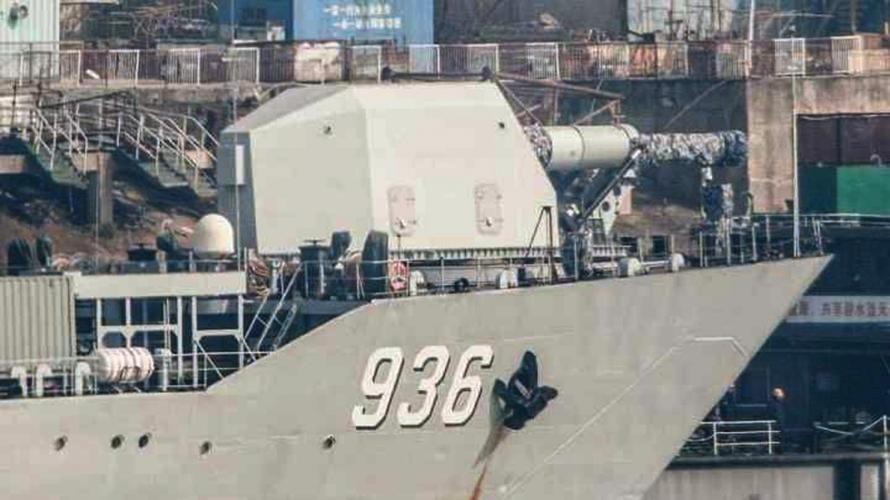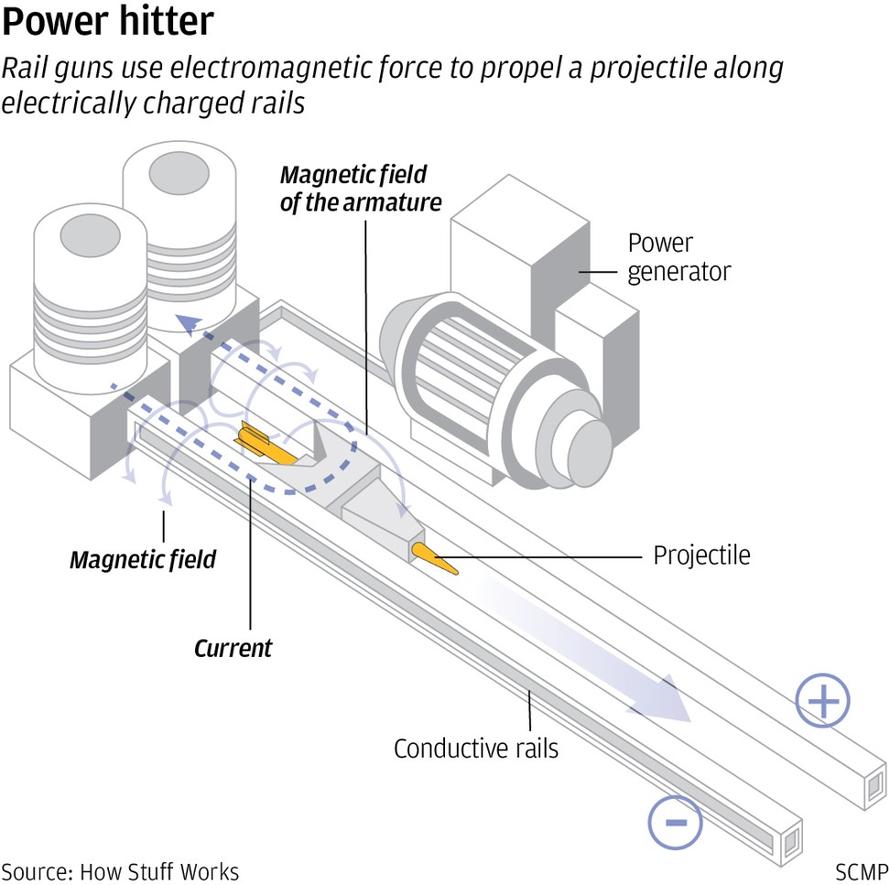Just on the heels of an alarming recent Pentagon intelligence study which assessed that China “already leads the world” in key areas of advanced defense technology, CNBC reports a huge breakthrough concerning what’s long been rumored the most feared and devastating futuristic weapon in Beijing’s arsenal: it’s now successfully tested “the world’s most powerful naval gun” — the ultra high velocity electromagnetically powered railgun — which is expected to be battlefield ready “by 2025, according to people with direct knowledge of a U.S. intelligence report.”

Speculation has long surrounded China’s massive railgun, which uses electromagnetic energy instead of gunpowder or explosive propelled rounds, which was first seen in 2011 and reportedly went through testing and calibration to reach extended ranges in the years following.
However, western military planners were generally shocked by how rapidly the Chinese were able to advance the project to the point that by Dec. 2017, the People’s Liberation Army (PLA) was able to mount it on a warship for sea testing — something no other country has accomplished and which the Pentagon hasn’t even come close to. US intelligence officials now say China will complete sea-testing of the railgun by 2023.
And the Pentagon has ample reason to worry given the railgun’s specs and capabilities. Citing intelligence sources and analysts, CNBC notes the weapon’s massive projectile can travel at a speed which would allow it to go a distance the equivalent of the length between Philadelphia and Washington in under 90 seconds.
The CNBC report describes China’s futuristic electromagnetic railgun as “capable of striking a target 124 miles away at speeds of up to 1.6 miles per second, according to the people who have knowledge of the intelligence report.”
This makes it the most powerful cannon to ever roam the high seas, and is now doing so ahead of schedule given prior US intelligence predictions. By comparison CNBC notes:
The U.S. Navy’s railgun, which is years away from being operational, remains a classified system still in development under the Office of Naval Research.
The gun can launch metal projectiles from dual electrified rails at a speed ranging from Mach 4 to Mach 7, making it capable of punching holes in enemy vessels or aircraft up to 150km away.
According to new intelligence cited in the CNBC report, the rounds used by the railgun cost between $25,000 and $50,0000 each, making it extremely cost effective in future operations. By comparison the US Tomahawk cruise missile has an estimated price tag of $1.4 million each.
What the hell is this? pic.twitter.com/sQDAsHd7A3
— dafeng cao (@dafengcao) January 31, 2018
As we previously reported Chinese media outlets, such as the state-affiliated Global Times, revealed last year in March that nearly two months after the first pictures of what was initially dubbed the “Yangtze River Monster” showed up online, the PLA began touting that it was “making notable achievements on advanced weapons, including sea tests of electromagnetic railguns.”
More recently Chinese ships were spotted with what appeared to be massive mounted railguns for sea-tests.
Long time no see, the railgun test ship is spotted undergoing sea trials these days. pic.twitter.com/WdxXkyYWrF
— dafeng cao (@dafengcao) December 29, 2018
“Chinese warships will ‘soon’ be equipped with world-leading electromagnetic railguns, as breakthroughs have been made … in multiple sectors,” China’s Global Times reported recently. The pro-Beijing newspaper proudly asserted that “China’s naval electromagnetic weapon and equipment have surpassed other countries and become a world leader.”
Both Russia and Iran have also reportedly been seeking to acquire their own railgun technology, according to US defense officials.
A future potential operational railgun roaming the South China Sea could given the PLA total dominance in a region increasingly growing hot as US ships and aircraft continue “freedom of navigation” operations, possibly provoking Beijing to assert itself and respond more aggressively.
via ZeroHedge News http://bit.ly/2sYLEVI Tyler Durden
